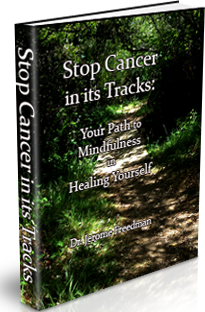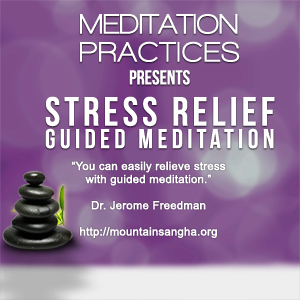Every Buddhist practitioner takes refuge in the Three Jewels. The Three Jewels are The Buddha, The Dharma, and The Sangha.
The Buddha
What does it mean to take refuge in the Buddha?
 When we take refuge in the Buddha, we aspire to awaken the seeds of joy, happiness, peace, and serenity in our lives and the lives of people around us. We offer your true presence to be there with our full attention.We are there with mindfulness and understanding. We are capable of being able to give and receive love and acceptance. Everyone around us is joyful.
When we take refuge in the Buddha, we aspire to awaken the seeds of joy, happiness, peace, and serenity in our lives and the lives of people around us. We offer your true presence to be there with our full attention.We are there with mindfulness and understanding. We are capable of being able to give and receive love and acceptance. Everyone around us is joyful.
We might say to our spouse, father, mother, sister, brother, son, daughter, or friend, “Darling, I am here for you and I am so happy.”
Taking refuge in the Buddha is not just taking refuge in the historical Buddha – the one that left the life of a prince to find a way to the end of suffering.
The story goes that the Buddha was born with the name Siddhartha Gautama sometime around 2,600 years ago (563 BC) in Kapilavastu – a small kingdom of the Shakya Republic in what is now known as the town of Lumbini in Napal. His father was Śuddhodana, King of the Shakya clan.
His mother, Queen Maha Maya, died during childbirth and he was raised by his mother’s youngest sister, Maha Pajapati.
He was not a god, but a human being like you and me.
Siddhārtha lived in separate seasonal palaces for the first 29 years of his life. He married Yaśodharā and had a child who he named Rāhula.
Whenever he left one of the palaces, his father made sure that the village outside the palace walls was cleaned up so that Siddhārtha would not be exposed to the suffering of the outside world.
One day when he left the palace, he saw a sickly person and asked his charioteer, Channa whether something like that would happen to him. Channa told him that it happens to everyone!
On another visit outside the palace, he saw an old man struggling to walk through the village. Channa once again told him that old age happens to everyone.
On yet another excursion, he saw a corpse, and Channa explained that everyone will die.
On a fourth occasion, he saw a wandering mendicant and asked who he was. Channa told him that he was a seeker of truth and freedom from suffering.
These four outings are known as the four messengers that inspired Siddhārtha to leave the palace and find his own way to relieve his suffering and the suffering of others.
For six years, he wandered around the regions of what is today Northern India in search of liberation. He had many teachers and tried all kinds of ascetic practices. Each teacher wanted Siddhārtha to take over his group of followers and become their teacher. Every time, Siddhārtha refused.
One day, he settled down by a papilla tree, the Bodhi tree, near what is now the town of Bodh Gaya.
At the age of 10, he had drifted off into a deep meditation under a tree during a traditional planting ceremony on one of Śuddhodana’s estates. This became the motivation for him to sit under the Bodhi tree and achieve his awakened state. From then on, he was known as the Buddha.
After his awakening, he spent the next 45 years teaching people from all castes and all walks of life only one thing: “I teach only suffering and the transformation of suffering.”
When he was about to pass into final nirvana, he said, “Be islands unto yourselves, refuges unto yourselves, seeking no other refuge; with the Dharma as your island, the Dharma as your refuge, seeking no other refuge.”
Taking refuge in the Buddha is taking refuge in the Buddha within ourselves, taking refuge in the island of ourselves. Our own true nature is Buddhanature – the best parts of ourselves. The Buddha said that all beings have Buddhanature.
The Dharma
What does it mean to take refuge in the Dharma?
When we take refuge in the Dharma, we aspire to follow the way that can bring relief, joy, love, and peace into our lives and the lives of people around us. Zen Master Thich Nhat Hanh says,
The Dharma is a path that can bring relief and joy and peace to us right away—we don’t need to wait. The Dharma is not a promise of happiness in the future. The practice of the Dharma is not a matter of time—as soon as you embrace the Dharma and practice, you begin to get relief and transformation right away. [See Meditation for the Sick and Dying.]
Taking refuge in the Dharma is taking refuge in the way of understanding and of love. These are the teachings of the historical Buddha as well as the many enlightened beings who followed his path.
The Sangha
What does it mean to take refuge in the Sangha?
When we take refuge in the Sangha, we are taking refuge in the monks, nuns, lay men, lay women who work together and live in peace, harmony, and awareness. We practice the art of mindful living by following the Five Mindfulness Trainings and / or the Fourteen Mindfulness Trainings of the Order of Interbeing.
A Sangha does not have to be Buddhist, as long as its members practice mindfulness, wisdom, joy, and peace. It can be any beloved community, to adopt the words of Dr. Martin Luther King, Jr. It can be members of the same church or synagog. It can be all the members of a masque. It can be a group of friends who gather together to promote the happiness of all its members and the community around them.
In Buddhism, there is the idea of the Buddha for the 21st, called Maitreya, the Buddha of Love. Thich Nhat Hanh says Maitreya
may well be a community rather than an individual. Sanghas that practice loving kindness and compassion are the Buddha we need. We can prepare the ground for bringing that Buddha to life, for our sake and for the sake of countless others, by transforming our own suffering and cultivating the art of Sangha-building. It is the most important work we can do. [The Heart of Buddha’s Teaching, p. 167]
Verses for the Three Jewels
We can simply practice the teaching of the Three Jewels by repeating these verse one at a time to ourselves during meditation or any other time.
I take refuge in the Buddha.I take refuge in the Dharma.
I take refuge in the Sangha.
In the Plum Village tradition of Thich Nhat Hanh, the Sangha has created some lovely verses to aid in the practice of the Three Jewels. They are usually sung or chanted one after another with each one followed by the sound of the bell. Here are a few of them.
I take refuge in the Buddha,
the one who shows me the way in this life.
I take refuge in the Dharma,
the way of understanding and of love.
I take refuge in the Sangha,
the community that lives in harmony and awareness.
[bell]Dwelling in the refuge of Buddha,
I clearly see the path of light and beauty in the world.
Dwelling in the refuge of Dharma,
I learn to open many doors on the path of transformation.
Dwelling in the refuge of Sangha,
shining light that supports me, keeping my practice free of obstruction.
[bell]Taking refuge in the Buddha in myself,
I aspire to help all people recognize their own awakened nature,
realizing the Mind of Love.
Taking refuge in the Dharma in myself,
I aspire to help all people fully master the ways of practice
and walk together on the path of liberation.
Taking refuge in the Sangha in myself,
I aspire to help all people build Fourfold Communities,
to embrace all beings and support their transformation.
[bell, bell]
Conclusion
The Buddha, Dharma, and Sangha are the three jewels of Buddhism. Practicing them daily can help us to recognize and appreciate our own true nature, our Buddhanature.
Are you willing to study, practice, and observe the Three Jewels in this life? I do and I am.
Note: This article was prepared for a service I am leading today at the Redwoods in Mill Valley. I’ll be happy to answer any questions you have. Thank you for reading!

The Heart of the Buddha’s Teaching:
Transforming Suffering into Peace, Joy, and Liberation













You must be logged in to post a comment.